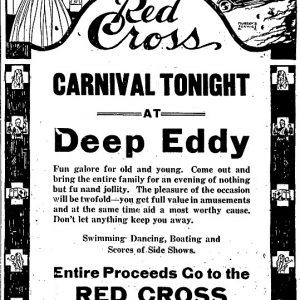To add or suggest an event, please contact our event coordinator here

- This event has passed.
THE WAR AT HOME: WORLD WAR I COMES TO TEXAS
October 21, 2018
Event Navigation

On June 28, 1914, a Serbian terrorist assassinated Archduke Franz Ferdinand of Austria, along with his pregnant wife Sophie, in Sarajevo. This single, albeit horrific, event over 5,000 miles away from Austin, Texas reverberated across the world as much of Europe became embroiled in war. Americans watched from the sidelines for over two years as hundreds of thousands died, hoping to avoid military engagement while providing supplies to the Allied forces of France, Britain, and Belgium.
When this all changed in early 1917, Texas found itself at the heart of the United State’s decision to go to war. In January 1917, German Foreign Minister Arthur Zimmerman sent an encoded telegram to the President of Mexico in which he encouraged Mexico to join the Central Powers in exchange for support in the reconquest of parts of the United States once claimed by Mexico (Texas, New Mexico, and Arizona). Intercepted and decoded by British cryptographers, the “Zimmermann Telegram” was the fuse that compelled Congress to declare war on Germany on April 6, 1917.
Over the eighteen short months the United States was at war, 4.7 million Americans served. 53,402 soldiers were killed in action, while even more (63,114) died of disease or other causes, the vast majority from the Spanish Flu epidemic. Here in Texas, 198,000 were in the armed forces along with 450 women who served as nurses. Over 5,000 Texans died, more than one-third succumbing to Spanish Flu without ever deploying to Europe.
This exhibit takes us back in time 100 years to life as experienced by Texans during World War I. The war was disruptive to family life in many ways. Enlistments certainly separated families, but everyday life was also impacted in many ways, from pressure to purchase war bonds, to the impact of the Spanish Flu, to a certain level of militarization of society, and food rationing. Finally, the image of the “dough-boy” that has come down to us today is of a white American soldier. Mexican-Americans, African-Americans, and German-Americans in many ways struggled to prove their Americanness while the country was at war, a struggle that was as acute in Texas as in the rest of the country.
The Cochran family lived in our historic house throughout the war era. Thomas B. Cochran had died in 1913, but his wife and five children (three daughters and two sons) all participated in the war effort in some way. Using their experience as well as the experiences of other Austinites as a guide, we explore the impact of the Great War on the lives of the people who remained on the home front and the relationships they maintained with soldiers who served elsewhere and abroad.


